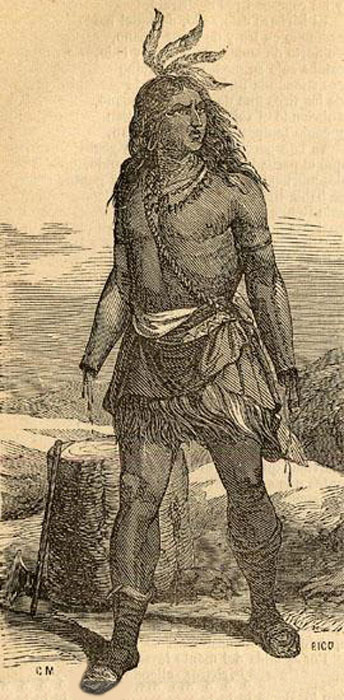
Eight Heroes and Heroines Whose Names Are Immortalized
Why do the names of some men and women survive the wearing effects of time, living through centuries of recorded history as ‘heroes and heroines’ while other people’s names vanish like dreams upon their death? There can be no doubt that one of the deciding factors is how some people found opportunities in times of oppression, and the decisions they made when the ‘call to action’ came. Eight of history’s most memorable people; from ruthless princess wrestlers to eye eating warriors, all paid the ultimate price for what they believed was right and true, thus, immortalizing their names for all time.
Galvarino
The Mapuche people are a group of indigenous inhabitants of south-central Chile and south-western Argentina, including parts of present-day Patagonia. Most modern scholars hold the southern border of the Inca Empire as being situated between Santiago and the Maipo River or somewhere between Santiago and the Maule River, meaning the bulk of the Mapuche escaped Inca rule.
Galvarino was a 16th-century Mapuche warrior who is recorded as having fought in the Battle of Lagunillas in the Arauco War on November 8, 1557. The army of García Hurtado de Mendoza clashed with the Mapuche army near some shallow lakes to the south of the Bio-Bio River. Galvarino was said to have been captured along with 100 of his fellow warriors, who were all tortured, losing a hand and their noses. Governor Mendoza was in charge of the punishments and while Galvarino lost both hands he kept his nose and was released, returning home with his men.

La Araucana, poem by D. Alonso de Ercilla y Zúñiga. Ed. illustrated. Madrid (Public Domain)
Handless, but resilient, Galvarino tethered blades to the stumps of his arms and went to battle assuring his men that if his new contraption did not work, he would just: “tear them apart with his teeth”. The Battle of Millarapue was the second battle between Galvarino and Governor Mendoza, whose second in command was struck down by Galvarino’s makeshift knife hands. Galvarino fought bravely but eventually Mendoza broke through Galvarino’s line and killed thousands of his men, before capturing Galvarino and throwing him to starving dogs.
Tlahuicole
Tlahuicole was a brave 16th-century warrior who lived in what is today Mexico. Having been held captive by Aztecs he eventually became integrated into their society and became one himself. Tlahuicole was promoted to commander of the Aztec army and it was said that soldiers could not lift Tlahuicole’s weapons because they were too heavy.
Like this Preview and want to read on? You can! JOIN US THERE ( with easy, instant access ) and see what you’re missing!! All Premium articles are available in full, with immediate access.
For the price of a cup of coffee, you get this and all the other great benefits at Ancient Origins Premium. And - each time you support AO Premium, you support independent thought and writing.
Ashley Cowie is a Scottish historian, author and documentary filmmaker presenting original perspectives on historical problems, in accessible and exciting ways. His books, articles and television shows explore lost cultures and kingdoms, ancient crafts and artifacts, symbols and architecture, myths and legends telling thought-provoking stories which together offer insights into our shared social history. www.ashleycowie.com.
Top Image: El Panteón de los Héroes (The Panthenon of Heroes) by Oleo de Arturo Michelena, (1898) (Public Domain)
By Ashley Cowie















